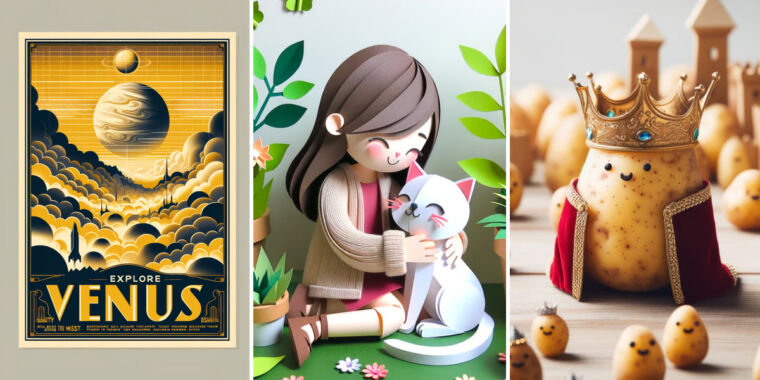On Wednesday, OpenAI announced DALL-E 3, the latest version of its AI image synthesis model that features full integration with ChatGPT. DALL-E 3 renders images by closely following complex descriptions and handling in-image text generation (such as labels and signs), which challenged earlier models. Currently in research preview, it will be available to ChatGPT Plus and Enterprise customers in early October.
Like its predecessor, DALLE-3 is a text-to-image generator that creates novel images based on written descriptions called prompts. Although OpenAI released no technical details about DALL-E 3, the AI model at the heart of previous versions of DALL-E was trained on millions of images created by human artists and photographers, some of them licensed from stock websites like Shutterstock. It’s likely DALL-E 3 follows this same formula, but with new training techniques and more computational training time.
Judging by the samples provided by OpenAI on its promotional blog, DALL-E 3 appears to be a radically more capable image synthesis model than anything else available in terms of following prompts. While OpenAI’s examples have been cherry-picked for their effectiveness, they appear to follow the prompt instructions faithfully and convincingly render objects with minimal deformations. Compared to DALL-E 2, OpenAI says that DALL-E 3 refines small details like hands more effectively, creating engaging images by default with “no hacks or prompt engineering required.”



The prompt is on the picture in the article:
Why do we need AI creating text, when nobody is reading?
Whoosh